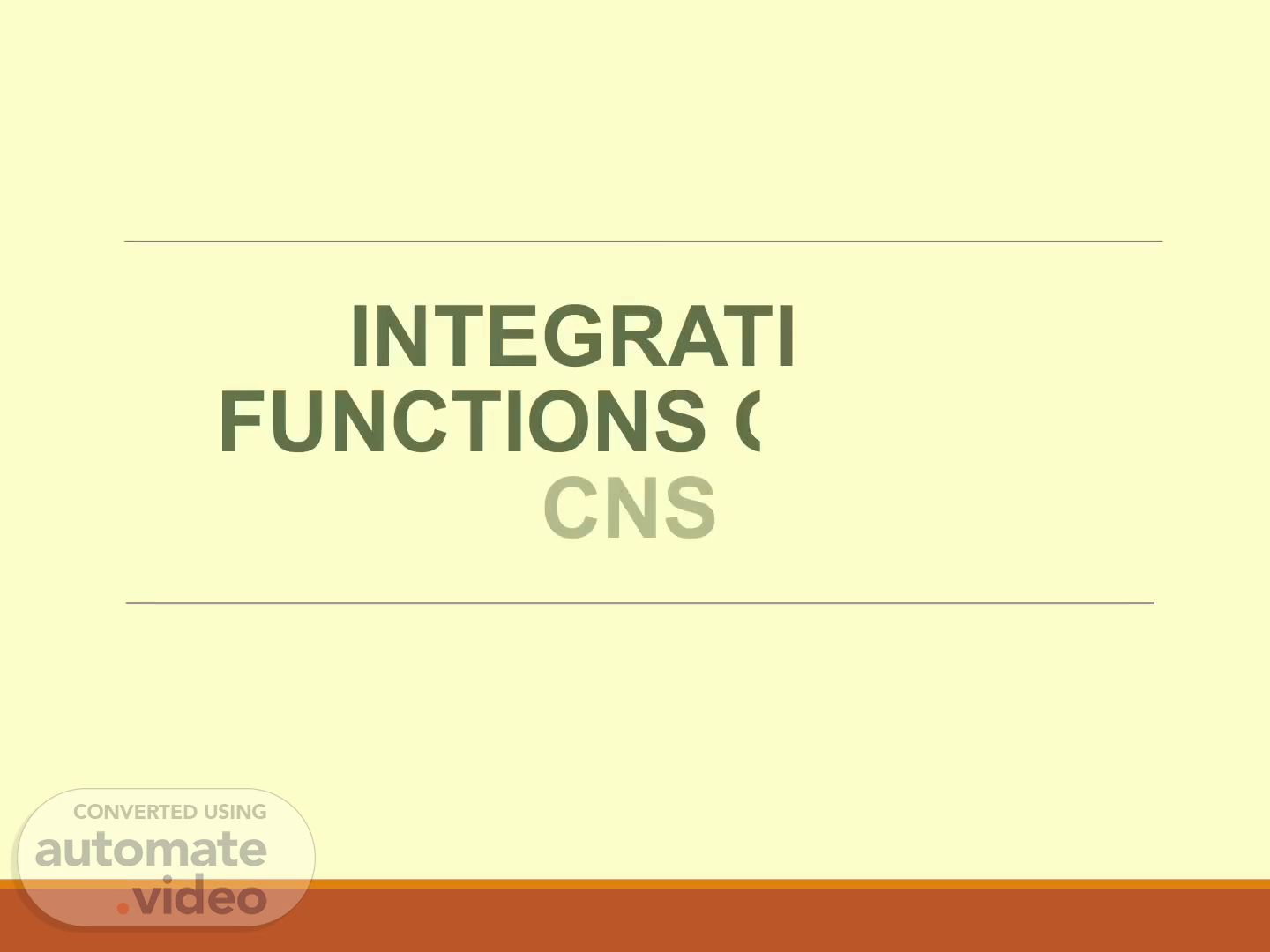
Page 1 (0s)
INTEGRATIVE. FUNCTIONS OF THE. CNS.
Page 2 (7s)
QUESTIONS:. 1. Lower and higher nervous activity.
Page 3 (21s)
THE LOWER NERVOUS ACTIVITY. •Refers to the processes that provide implementation of the innate behavioral activity.
Page 4 (35s)
HIGHER NERVOUS ACTIVITY. ✔ human behavior in the external environment.
Page 5 (52s)
REFLEX An automatic, patterned response to a sensory stimulus is called a reflex. Schematic representation of reflex arch. Reflexes - is an adaptive reaction of animals and humans, conditioned by stimulation of receptors and mediated by the central nervous system. It is the basic functional unit of the nervous system..
Page 6 (1m 8s)
UNCONDITIONED REFLEXES. �The unconditioned reflex is the innate reaction of the.
Page 7 (1m 30s)
TABLE 9.3 Classes of Reflexes Basis of classification level of neural processing Efferent division contolling effector Developmental pattern Number of synapses in the pathway Classes Spinal Cranial Somatic Autonomic Innate Conditioned Monosynaptic Pobnaptic Example Muscle spindle stretch reflex Pupillary reflex Muscle spindle steth reflex Baroreceptor blood pressure Muscle spindle stretch reflex Salivation reflex of Pavlov's dogs Muscle spindle stretch reflex All other reflexes.
Page 8 (1m 45s)
UNCONDITIONED REFLEXES. �are congenital somatic and autonomic.
Page 9 (2m 0s)
Muscle spindle Stimulus Patellar tendon Figure 9.19 The muscle spindle stretch reflex. Afferent neuron Quadriceps Hamstrings Efferent neurons To brain OJ Interneuron.
Page 10 (2m 8s)
Unconditioned reflexes. ✔Simple reflexes: somatic and autonomic.
Page 11 (2m 23s)
INFANT, OR NEWBORN REFLEXES. ✔Sucking reflex. ✔Palmar grasp reflex is primarily reflex.
Page 12 (2m 50s)
Emotions. �They are psychological processes, including subjective.
Page 13 (3m 19s)
Basic emotions. Fear, surprise, anger, disgust, happiness, sadness.
Page 14 (3m 43s)
Properties of emotions. �Subjectivity - different individuals can respond to the same situations.
Page 15 (4m 12s)
Motivation. Motivation – cause or complex of causes directing our voluntary behavior. The needs are base of motivation. The need is a state of lack or excess of something that leads us to the activities by which we satisfy that need. We divide the needs into: • biological (primary, congenital) - need to breathe, need to feed • social (acquired) - cultural (education, cultural life ...) • psychic (joy, happiness, love ...).
Page 16 (4m 40s)
Theories of motivation. �Instinct—motives are innate.
Page 17 (4m 55s)
INSTINCT. 1. It is complex of the mobile activity to the certain animal species. and specific forms of the behavior relate. An instinct is an innate disposition to a certain activity or to a certain goal. They are innate, inherited behaviors that neither human nor animal need to learn..
Page 23 (5m 52s)
The special reflex laboratory by I.V.Pavlov.
Page 25 (6m 6s)
CONDITIONED REFLEX. ◦Is a reflex response to a stimulus which does not elicit the response itself but acquires after repeated application with another specific stimulation that normally evokes such a response. ◦Conditioning = training ◦A conditioned reflex is a complex multicomponent reaction established on the basis of an unconditioned reflex using a preceding neutral stimulus..
Page 26 (6m 22s)
Unconditioned reflexes Conditioned reflexes. 1. Inborn, inherited responses, the majority of which start functioning.
Page 27 (6m 55s)
Characteristics. �are the basic physiological mechanism for higher.
Page 28 (7m 12s)
Classification. I. According to biological importance.
Page 29 (7m 23s)
Classification. III. According to base reflexes. •First order reflex •Second order reflex •High order reflex.
Page 30 (7m 34s)
Classification. V. According to receptors. oExteroreceptive.
Page 34 (8m 3s)
Mechanism of conditioned. reflex. �Conditioned reflexes, as a rule, reproduce the.